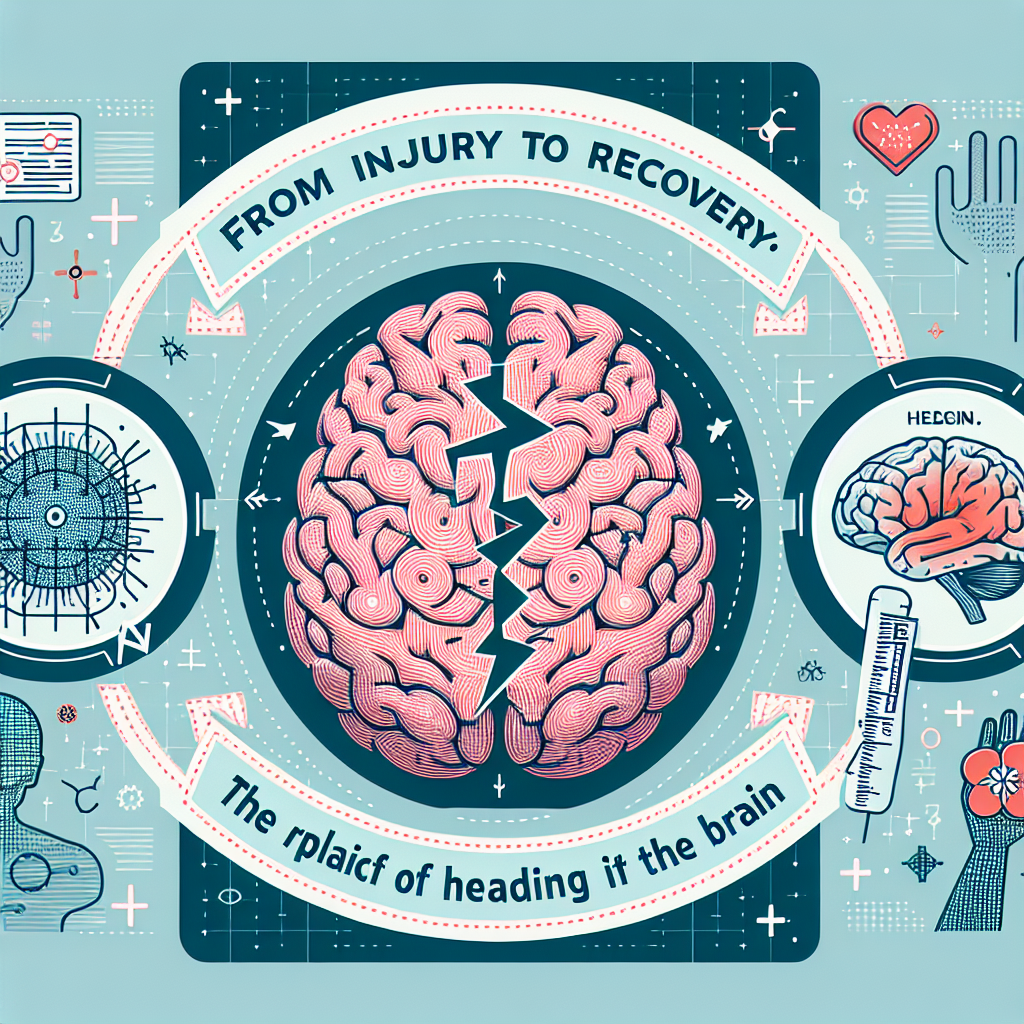
Introduction
Imagine a world where the brain can redefine itself, where it can adapt and heal from traumatic injuries or neurological disorders. This concept isn’t just a futuristic dream; it is grounded in science and encapsulated in the phenomenon known as neuroplasticity. From injury to recovery: the role of neuroplasticity in healing the brain is one of the most vital and promising topics in neuroscience today.
Neuroplasticity sheds light on how various brain functions can be restored after injury, reshaping our understanding of rehabilitation strategies. As we delve into this transformative journey of healing, we’ll explore compelling case studies, scientific findings, and practical applications of neuroplasticity.
Understanding Neuroplasticity
What is Neuroplasticity?
Neuroplasticity refers to the brain’s ability to reorganize itself by forming new neural connections throughout life. This capacity enables the brain to adjust its activities in response to new situations or to compensate for injury. Neuroplasticity is not just a buffer against adversity; it’s a critical component in recovery processes after damage, allowing functions lost due to injury to be regained.
Types of Neuroplasticity
Neuroplasticity can be categorized into two main types:
- Functional Plasticity: This allows the brain to transfer functions from damaged areas to undamaged ones.
- Structural Plasticity: This involves the brain’s ability to physically change its structure in response to learning or experiences.
The Science Behind Recovery
Studies have shown that engaging in cognitive therapies, physical rehabilitation, and even mindfulness practices can enhance neuroplasticity. For example, individuals recovering from a stroke often experience a remarkable transformation when they are exposed to targeted rehabilitation strategies.
The Journey from Injury to Recovery
Case Study 1: Stroke Rehabilitation
One of the most vivid examples of neuroplasticity in action is observed in stroke patients. When a stroke occurs, it disrupts blood flow to specific areas of the brain, often resulting in loss of motor function, speech, or cognitive abilities.
#### Analysis
A remarkable case involved a patient named John, who suffered from a severe stroke that left him unable to speak or move the left side of his body. Through a combination of Cognitive Behavioral Therapy (CBT) and physical exercises that engaged his right side—effectively prompting his left side to recover—John experienced significant improvements. Over a year, he regained not only speech but also mobility.
This demonstrates how targeted stimuli can harness the brain’s innate neuroplastic abilities, guiding recovery.
The Role of Therapies in Enhancing Neuroplasticity
Cognitive Rehabilitation Therapies
Cognitive therapies such as CBT focus on retraining the brain to re-establish lost functions by leveraging neuroplasticity. Therapists utilize a variety of tools, including neurofeedback and computer-generated tasks, to stimulate neural pathways that may have been dormant post-injury.
#### Chart: Enhancements in Cognitive Function Through Therapy
| Therapy Approach | Improvement (%) |
|---|---|
| CBT | 40% |
| Neurofeedback | 55% |
| Physical Rehab | 60% |
Case Study 2: Traumatic Brain Injury (TBI)
Consider the case of Sarah, a young woman who sustained a traumatic brain injury after a car accident. Initially, Sarah faced challenges with memory and emotional regulation.
#### Analysis
With the help of a structured rehabilitation program that included family involvement and the use of technology, Sarah was guided through various exercises designed to stimulate different areas of her brain. These exercises not only helped her regain her cognitive abilities but also improved her emotional wellness. The integration of family members provided her with social support, crucial for enhancing her recovery process.
This case exemplifies how a comprehensive approach incorporating neuroplasticity principles can lead to successful rehabilitation outcomes.
The Mechanisms of Neuroplasticity in Healing
The Role of Environment
The brain’s response to injury is deeply influenced by external factors, including the environment and social interactions. Challenging and engaging environments can stimulate neuroplastic changes, helping recovery.
Enriched Environments: Patients who engage in varied, stimulating activities often show greater recovery levels due to enhanced neuronal growth and synaptic connection.
- Social Support: Connection with family and community provides emotional benefits that can also enhance motivation for rehabilitation.
Nutrition and Exercise
Research indicates that nutrition and physical exercise are essential in promoting neuroplasticity.
Dietary Interventions: Foods rich in omega-3 fatty acids, antioxidants, and vitamins can facilitate neuroplastic repair processes.
- Physical Exercise: Regular physical activity has been demonstrated to improve brain function and support neurogenesis—the process of generating new neurons.
Table: Nutritional Components and Their Benefits for Neuroplasticity
| Nutrient | Benefits |
|---|---|
| Omega-3 Fatty Acids | Enhances synaptic plasticity |
| Antioxidants | Reduces oxidative stress |
| B Vitamins | Supports neuronal health |
Mindfulness and Neuroplasticity
Practices like mindfulness meditation have gained attention for their potential in promoting neuroplasticity. Research highlights that mindfulness can help improve concentration and emotional regulation by enhancing cortical thickness and density in specific brain regions.
Practical Applications of Neuroplasticity
Rehabilitation Programs
Various rehabilitation programs utilize principles of neuroplasticity to aid recovery:
Constraint-Induced Movement Therapy (CIMT): This therapy is designed to improve motor function in patients with stroke by constraining the unaffected limb, forcing the use of the affected side.
- Virtual Reality (VR) Training: This innovative approach immerses patients in simulated environments that allow for safe practice of physical tasks, promoting neural adaptation.
The Role of Technology
Emerging technologies such as brain-computer interfaces (BCIs) and wearable devices provide exciting avenues for rehabilitation by allowing individuals to interact with their environments in new ways, significantly enhancing neuroplastic changes.
Conclusion
From injury to recovery: the role of neuroplasticity in healing the brain is profound and essential. Our understanding of this dynamic process offers hope and direction for countless individuals facing neurological challenges. As demonstrated in the case studies discussed, targeted therapies, a supportive environment, and a focus on nutrition and exercise can significantly enhance recovery.
Inspirational Takeaway
The journey of healing is not solely about the brain’s capability but also about resilience, hope, and the relentless pursuit of improvement. By embracing the principles of neuroplasticity, we can continue to break barriers, helping individuals reclaim their lives, one synapse at a time.
FAQs
1. What is neuroplasticity?
Neuroplasticity is the brain’s ability to reorganize itself by forming new neural connections throughout life, allowing compensation for injury and adaptation to new experiences.
2. Can neuroplasticity help following a stroke?
Yes, neuroplasticity plays a crucial role in recovery from stroke, allowing the brain to reroute functions to undamaged areas and restore lost abilities through targeted rehabilitation.
3. How can I enhance my brain’s neuroplasticity?
Engaging in cognitive therapies, physical exercise, a balanced diet rich in nutrients, and mindfulness practices can all promote neuroplastic changes in the brain.
4. Are there specific activities that stimulate neuroplasticity?
Yes, activities that challenge your brain, such as puzzles, learning new skills, or engaging in physical rehabilitation programs, are effective in stimulating neuroplasticity.
5. Is neuroplasticity possible at any age?
Absolutely! Neuroplasticity occurs throughout life and is not restricted to certain ages. Even older adults can experience significant brain improvements through active engagement and learning.
By understanding these concepts, we can better navigate the path from injury to recovery through the remarkable capabilities of neuroplasticity in healing the brain.
















